The Ideal Dealer

Having confidence that you can rely on a dealer to provide reliable, competent service and access original equipment manufacturer (OEM) repair and replacement parts quickly are key considerations that influence contractors’ new equipment purchase decisions. To get a better sense of a dealer’s service capabilities and the ability to get parts in a timely manner, contractors should do some homework.
Background Checks
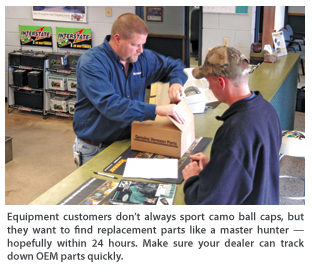 Find a dealer you can trust to handle service and repairs starts by completing a background check. Schedule a time to visit the dealership and have a list of questions prepared for key service and sales personnel. Ask to take a tour of their service facility and talk to a few service technicians. Make some general observations of the overall appearance of the facility. If possible, talk to other contractors. Firsthand knowledge from those who have dealt with the facility in the past is often the most reliable information you can get.
Find a dealer you can trust to handle service and repairs starts by completing a background check. Schedule a time to visit the dealership and have a list of questions prepared for key service and sales personnel. Ask to take a tour of their service facility and talk to a few service technicians. Make some general observations of the overall appearance of the facility. If possible, talk to other contractors. Firsthand knowledge from those who have dealt with the facility in the past is often the most reliable information you can get.
Tim Junkins, service manager for Vermeer Southeast, Marietta, Ga., encourages contractors to also look into affiliations and alliances a dealer has with equipment manufacturers and other suppliers.
“Being affiliated with a manufacturer network or even a consortium of other dealers is very beneficial, especially for access to parts,” Junkins says. “We have 13 dealers in the Vermeer Southeast network and all work together if we need help locating a specific part. And in the unlikely event that one of us doesn’t have it, as a member of the Vermeer dealer network, we can usually get what we need from the factory within 24 hours.”
Most of the major equipment manufacturers have established service training programs for technicians who are affiliated with their dealer networks. These programs are especially effective because classes are customized to specific models and often taught by individuals who had a role in the design, assembly or operational features of specific machines. Technicians come away better prepared to quickly identify problems and complete the necessary repairs.
Service and Sales Working Together
Contractors should also have a good sense of how the sales and service departments of a dealership are connected and work together. “When service and repairs are needed, it’s usually the person who sold you the equipment that gets the call,” Junkins says. “Sales and service teams need to be interconnected and work together. Service needs to understand how important the customer’s relationship is to the salesperson, and salespeople should have an appreciation for the role that the service department plays in keeping that relationship strong. I always tell all our salespeople that after they make the first sale, as service manager, I will make sure there is a second and third, and who knows how many after that.”
Dave Goodsell, sales manager for Bobcat of Omaha, is well aware of the role that providing quality and reliable service plays in a contractor’s decision to purchase from one dealer over another — and makes sure that sales and service departments in his dealership are closely linked.
“I would say service is the major factor that drives purchase decisions 70 percent of the time,” Goodsell says. “If the service department doesn’t live up to customer expectations, there’s no second chance. Customers will take their business elsewhere. A manufacturer can build the best quality machine in the industry, but if they don’t have dealers who know how to properly service it, or, just plain don’t provide good service, the manufacturer is going to suffer.
“Contractor’s No. 1 equipment concern is downtime,” Goodsell says. “If we have a customer with a machine that needs major repair work and know it may take awhile, we will even go beyond the Bobcat warranty and provide them comparable equipment to keep him going. I know it’s not possible or feasible for all dealers to be able to do this, but I would encourage contractors to ask about loaner equipment when considering a new equipment purchase.”
Randy Happel is a features writer for Two Rivers Marketing, based in Des Moines, Iowa.
The Dealer Service Background Checklist:
- Backed by a proven distribution and service network.
- Alliances with manufacturers, jobbers and outsource components suppliers.
- Tour of facilities and conversations with service technicians and key personnel.
- Talk with other contractors for references.
- Qualifications and training required of service technicians by the dealer and affiliations with manufacturer.
- Loaner equipment available while service is performed or until parts arrive.
- Dealer provides written estimates for non-warranty repair and service costs.
- Sales and service departments work together.
Compressor Filter Facts
Eliminate the Guess Work when Maintaining a Portable Compressor
By Christina Fisher
Portable air compressors play a big role on the jobsite. OEM filters play a critical role in extending the performance life of a portable compressor and ensure it is working at optimum levels. Together, they will provide high-efficiency compressed air day in and day out. Here are the basics you need to know.
Filtration
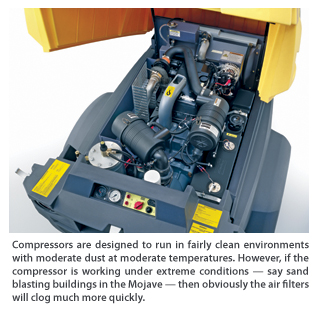
“Rotary screw compressors have very tight tolerances. The oil is the only thing that seals the veins or fins on the screw, which compresses the air,” says Matt Cadnum, Atlas Copco vice president of aftermarket. “Therefore, if you get any kind of dirt or particulate matter in the oil, it will start wearing that screw or element. If this starts wearing, you lose efficiency and air flow, and you burn more fuel. This is why filtration is so important.”
There are essentially three stages of filtration for compressor element oil, and each stage must be operating efficiently in order to properly filter the entire system.
- Air Filter: As outside air flows into the rotary screw to be compressed, it must be filtered. The filtered air and the compressor element oil mix. Therefore, if the air filter has the wrong micron rating, is inefficient, or fits incorrectly and allows unfiltered air to enter the system, the oil will get dirty very quickly.
- Compressor Oil Filter: Next, the compressor oil passes through a screw-on oil filter as the second stage of filtration. Key here is the presence of a bypass valve in the filter. If the compressor oil filter becomes clogged, this bypass valve allows the oil to pass through to continue to lubricate the parts and prevent extensive damage to the compressor. While this certainly isn’t ideal, “Dirty oil is better than no oil,” Cadnum points out. “A filter could have the wrong micron rating, and there are filters that don’t have bypasses to allow continued lubrication of the parts. This is why OEM parts are so important; you know you are using the correct filter.”
- Separator Element Filter: During compression, oil and air mix together in the rotary screw. Centrifugal force then removes most of the oil before the air passes through a separator element. The separator element filter has the finest micron rating of all three filters to remove any remaining oil and very small particulates. If the particulate matter going into the final filter is too big — perhaps because incorrect filters were used during stages one and two — it will clog or tear very quickly. Oil will pass through and get into the output air.
Using correct OEM filters with the proper micron rating will help avoid these issues, but filters must also be changed at the proper interval, which is determined by the manufacturer or based on the working environment. Compressors are designed just like any other piece of equipment — to run in a fairly clean environment with moderate dust at moderate temperatures. However, if the compressor is working under extreme conditions — where there’s a lot of concrete dust, for example — then obviously the air filters will clog much more quickly and should be changed accordingly.
“Most compressors in the field are running well below their maximum efficiency because they are poorly maintained,” says Cadnum. “As a result, contractors are using a lot more fuel than they have to and increasing the cost of ownership dramatically — sometimes by as much as 200 percent.”
Christina Fisher is a public relations manager for Ellenbecker Communications Inc., based in Round Lake, Minn.
Mini Essentials
Track Undercarriage Wear on a Compact Excavator
By Christopher Weishaar
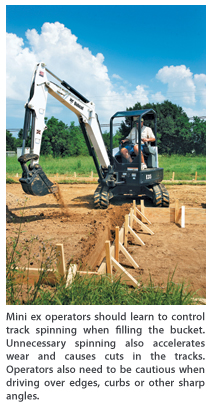
“Compact excavator undercarriages don’t see the same duty cycle as that of a compact track loader,” says Tom Connor, Bobcat excavator product specialist. “However, tracking wear is still important, as an improperly tensioned track or worn sprocket could cause additional problems and additional costs for a contractor.”
Tracking Tracks
A good plan to track the wear on a machine’s undercarriage starts with a daily visual inspection of the tracks. Connor says depending on the applications the machine is used in, tracks may need to be replaced due to old age before other reasons. However, damage to tracks can still happen and a daily inspection will help prevent failure of a track.
The operator of the machine should do a walk around of the machine each day before starting work. When examining the track, the operator should look for cuts or tears on the track or any place where the steel imbeds are showing. Any of these could lead to moisture or contamination getting in the track, which in turn accelerates the chance for a failure and downtime on the jobsite.
Another important item to check is track tensioning. Connor says the tracks should be tensioned correctly, not too tight and not too loose. Referring to the operation and maintenance manual will help keep the tracks in the right tension range.
“Running too tight can suck up power on the machine,” Connor says, “while running too loose could lead to a track being thrown when the machine twists and turns in loose materials such as pea rock. That is hard on the track as it puts an enormous force on it that it is not necessarily designed for.”
Undercarriage Components
While other undercarriage components may not need a daily inspection like tracks, regular monitoring of the components can help identify potential problems early. Idlers, rollers and sprockets are all components that should be checked.
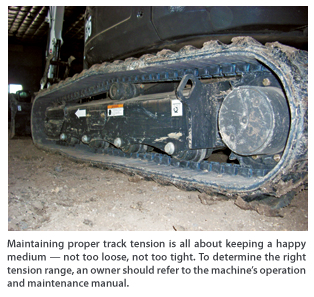
While accelerated wear on the sprocket is not common, it should still be checked periodically. To check the wear on a sprocket, look at the teeth. A good sprocket tooth has a rounded end, while a worn tooth is more pointed. This is especially important to check when putting a new set of tracks on the machines. “You don’t want to put a new track on a bad sprocket because it will accelerate the wear of the steel imbeds in the new track,” Connor says.
Whether it’s being used for a trenching and excavating application or to demolish and move concrete, a compact excavator has the same risks of any tracked machine. However, a routine inspection schedule can help identify issues early and prevent extra downtime or damage to the machine.
Christopher Weishaar is a technical writer for Two Rivers Marketing, based in Des Moines, Iowa.

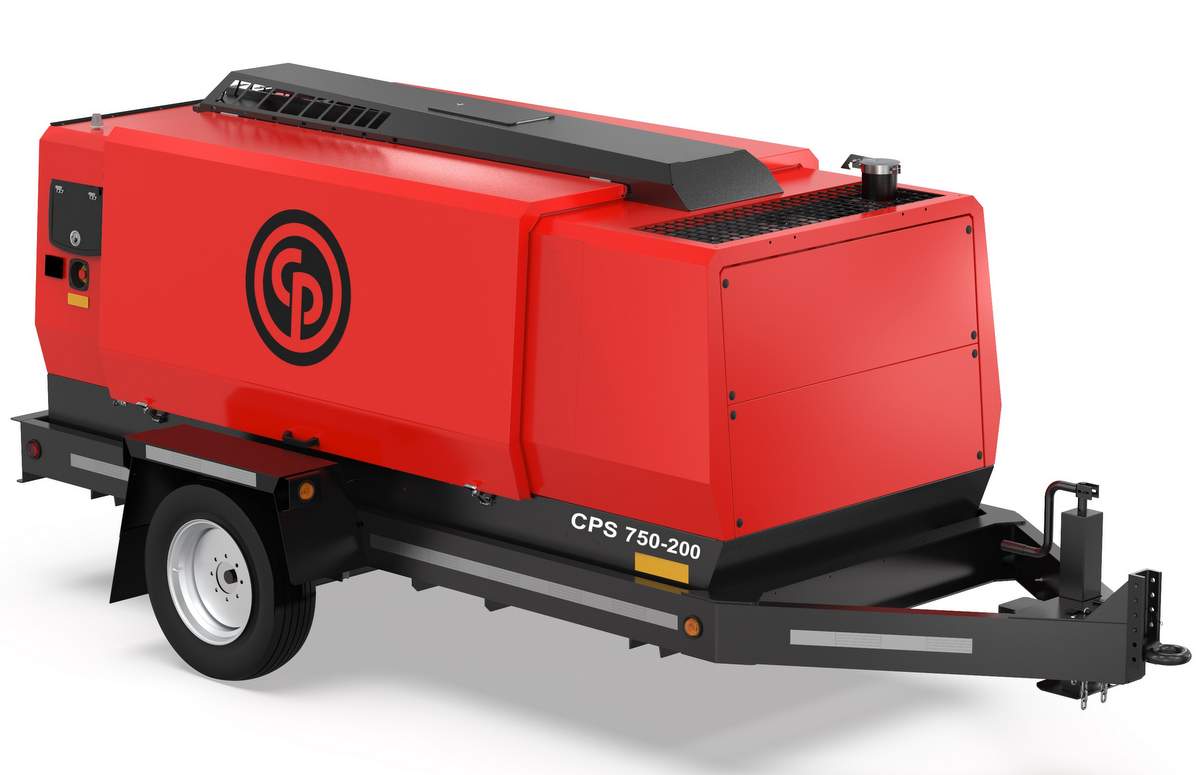
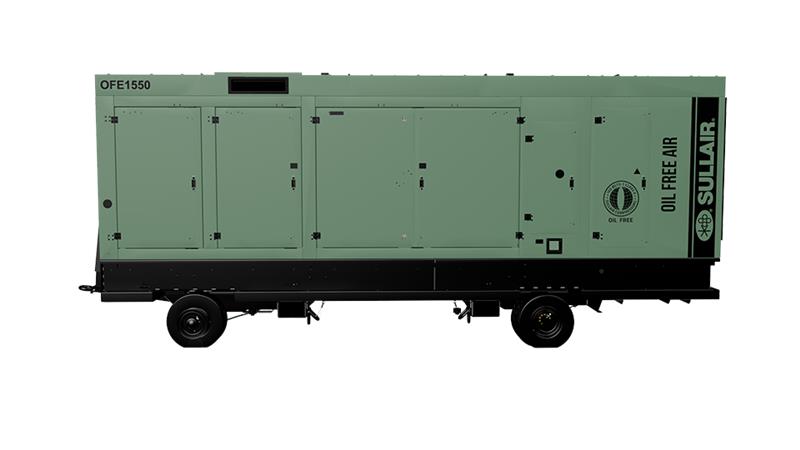


Comments are closed here.